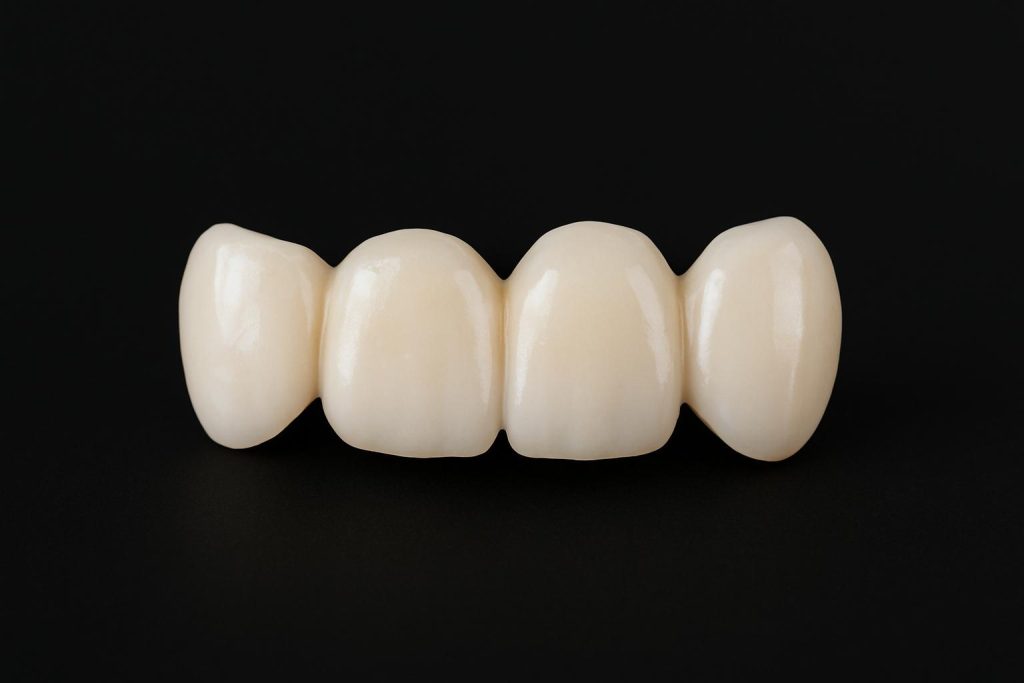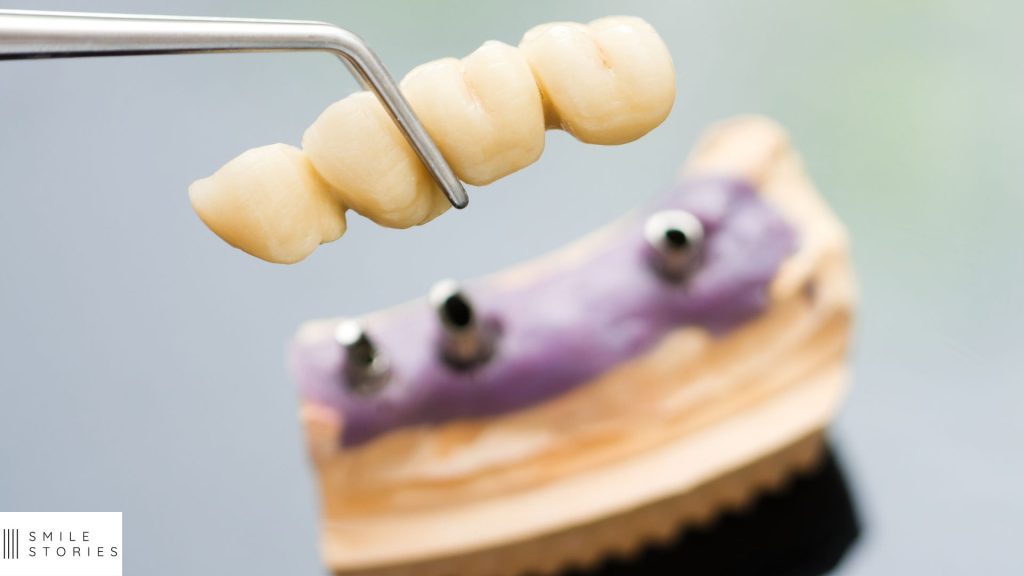How Many Teeth Can You Have on a Bridge?
Have you got a gap in your teeth and wondered if a dental bridge can fix it? You’re not the only one asking. Lots of people want to know how many teeth you can have on a bridge, and the answer isn’t the same for everyone.
The good news? Well, whether you’re missing just one tooth or a few in a row, bridges can often step in and give you a natural, confident smile again. It all comes down to the type of bridge you choose, the strength of your teeth (or implants) holding it up, and how big the gap is.
What exactly is a dental bridge?
Think of a dental bridge like a little team of replacement teeth filling in a gap in your smile. The fake teeth sit in the space, and they’re held in place by abutment teeth, which are your natural teeth or implants on either side.
Bridges don’t just make your smile look great again; they also stop the rest of your teeth from moving around, make eating easier, and bring back your confidence when you laugh or chat.

How many teeth can a dental bridge replace?
The quick answer is that most bridges replace one or two teeth with no problem, but a well-planned bridge can cover three or even four missing teeth in a row if your abutment teeth or implants are strong enough.
If you’re missing more than four teeth, implants or an implant-supported bridge is often the smarter (and safer) option.
So, yes, a dental bridge can replace multiple teeth, but there’s a limit. The bigger the gap, the more pressure goes onto those anchor teeth, so it’s our job to make sure your bridge doesn’t just look good but also lasts without damaging the teeth supporting it.
How many missing teeth can a bridge cover safely?
It may be tempting to go big and cover lots of missing teeth with one bridge, but here’s the thing: the longer the bridge, the more it acts like a see-saw. That puts a ton of strain on your anchor teeth, which can cause them to weaken over time.
That’s why we usually say:
- One to three missing teeth? A traditional bridge is perfect.
- Four or more? Consider adding implants for strength, or go with an implant-supported bridge for a rock-solid smile.
We will take scans, check your bite, and look at the health of your teeth before recommending what’s best.
The different types of dental bridges (and what they can handle)
Not all bridges are the same, and the type you get will impact how many teeth a dental bridge can replace.
Traditional bridge
This is the go-to option, it uses crowns on your natural teeth either side of the gap to hold everything in place which is perfect for one or two teeth, sometimes three if your anchor teeth are strong.
Cantilever bridge
This one is supported on just one tooth instead of two. Because of that, it’s best for replacing a single tooth near the front, where there’s less pressure from chewing.
Maryland bridge
Rather than crowns, a Maryland bridge uses a porcelain ‘wing’ that bonds to the back of your teeth. It’s super conservative and great for one missing front tooth, but it’s not built for big gaps.
Implant-supported bridge
If you’re missing several teeth, implants step in to act as anchors. This setup is incredibly strong and can replace four or more teeth in a row, so it’s ideal for anyone who wants a fixed, long-lasting solution without overloading their natural teeth.

What bridge is right for you?
Every smile is different, so the best way to know how many missing teeth a bridge can cover for you is to have a proper check-up. At Smile Stories, we’ll scan your teeth in 3D, chat through your options, and explain what’s realistic, not just for now, but for your future smile too.
Sometimes a single bridge is the perfect fix, but other times, implants or a mix of solutions make more sense. Whatever the plan, our goal is always a strong, healthy, natural-looking smile that lasts.
Why choose a dental bridge?
Bridges are a brilliant choice for many people because they:
- They look totally natural (no one will ever know!)
- They keep your other teeth in line and prevent structural damage to your teeth
- They make eating and speaking easier
- They are fixed in place, so no taking them out like dentures
- They can be a quicker, less invasive solution than a full set of implants
The bottom line is that dental bridges are flexible
So, how many teeth can you have on a bridge? Usually one to three, sometimes more if you’ve got strong supporting teeth or choose implant anchors. If you’re wondering how many teeth a dental bridge can replace in your specific case, the best thing you can do is book a consultation and get tailored advice.
Bridges are one of the easiest ways to restore your smile and confidence, and at Smile Stories, we’ll help you choose the option that fits your life and budget perfectly.


